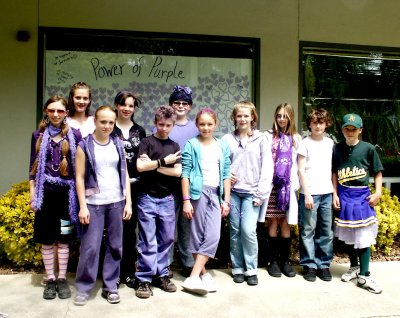
Tule elk are once more at home at Lake Pillsbury, thanks to efforts from state and federal agencies, and a conservation organization. Photo courtesy of the Mendocino National Forest.
MENDOCINO NATIONAL FOREST – A small herd of tule elk is thriving at Lake Pillsbury thanks to efforts during the past three decades to reintroduce the animals, which were nearly hunted to extinction.
Tule elk once were at the brink of disappearing due to habitat changes and overhunting, said Lee Morgan, a Mendocino National Forest biologist.
Beginning in the state's Gold Rush era, “market hunters” – who shot the animals and then sold the meat – began to erode herd numbers, Morgan explained.
Within 30 years, market hunters had nearly wiped out the tule elk statewide, said Morgan, a situation he said was similar to what happened to the American bison.
Different historical accounts put the tule elk's lowest numbers at between two and 20, he said.
The elk had also been at home in Lake County, which Morgan said is on the edge of the tule elk habitat.
Beginning in the 1970s, the state Department of Fish & Game began reintroducing the animals to the Lake Pillsbury Basin, according to a report by Phebe Brown, the forest spokesperson.
Fish & Game initially brought in 20 animals, Brown reported. Several years ago, Morgan said, another group of elk were brought in.
In January, forest biologists counted 68 elk, including 17 branched bulls, Brown reported.
Morgan said it's a steadily growing herd. “We're expecting to see about a dozen calves this year,” he said, which would bring the herd size to about 80.
“It's the only tule elk herd on our forest that's regularly present,” said Morgan, although some tule elk sometimes travel in from other areas, such as Covelo.
Mendocino National Forest and the Los Padres National Forest in Goleta are the only two national forests in the state to have tule elk, Morgan reported.
The Pillsbury elk can't be hunted, said Morgan, as there's no elk hunting season in that area.
What's a tule elk?
The Rocky Mountain Elk Foundation, a conservation organization based in Missoula, Mont., reports there are four elk subspecies: the Rocky Mountain, found in the Rocky Mountain West region; Roosevelt's, found along the Pacific Coast; the tule, in central California; and the Manitoban, found in the northern Great Plains.
Tule elk are a smaller breed of elk, Morgan said, normally about two-thirds the size of a Rocky Mountain elk.
The cows they've collared in the Pillsbury herd range between 300 and 350 pounds, he said, with the biggest bull weighing in at roughly 500 pounds.
Tule elk tend to prefer flatter ground, he said, and don't range as far as some other elk species.
Although Rocky Mountain Elk are found in California, Morgan said that there is some disagreement among scientists about whether or not that elk subspecies is actually native to California.
Grants helped elk project
The effort to make the elk at home once more was aided by a partnership between the Mendocino National Forest, Fish & Game and the Rocky Mountain Elk Foundation.
The Rocky Mountain Elk Foundation gave the effort a grant to help pay for radio telemetry, which is used to county and monitor the elk and their habitat usage, Brown reported. Fish & Game and the Forest Service have worked together to capture and monitor the elk.
Brown reported that several types of recent projects have benefited tule elk around the lake. The Rocky Mountain Elk Foundation, Fish & Game and California Deer Association have provided grants that, combined with Forest Service funding, helped pay for work that improves forage for tule elk, deer, and other wildlife.
Visitors can see mechanical brush management and burning projects that have been completed on several hundred acres on the flats at the north end of the lake, Brown reported. The work produces additional food for wildlife as well as reduces fuel concentrations that pose a threat to adjacent homes and forested habitat.
The National Forest has initiated several new forest thinning and fuel reduction projects that will create additional understory forage on more than 1,500 acres on ridges to the east and west of the lake, according to Brown. Elk forage and elk use had been limited on those ridge locations prior to project work, but elk use has already increased where that work has begun east of the lake. Planned future understory burns should help maintain favorable forage conditions while keeping fuel profiles reduced.
Morgan said an Elk Foundation grant will help fund a 100-acre project that this year that will burn older chaparral to provide better feed for area deer and elk. When the chaparral grows back, the elk find the younger growth more palatable and will mow it down, he said, which in turn helps control the brush.
The forest's tule elk also enjoy wild clovers and grasses, he said, and when the main grasses dry out, they'll focus more on the green summer and fall foliage around Lake Pillsbury's edges.
Fish & Game overflies the herd monthly, said Morgan. The National Forest monitors the elk from the ground; Morgan said he comes over monthly to check on them, making more visits during calving season.
Fish & Game wildlife biologist David Casady said the agency is excited about how the elk are doing at Pillsbury.
“There are more elk here than we thought and the herd is growing nicely,” he said. “We have learned new information about local elk movements and relative habitat usage from the telemetry so that land managers can better plan elk enhancement projects near the lake.”
He added, “We are hoping the ongoing bull telemetry will show if some animals are moving between here and adjacent herds.”
Knowing where the elk go and along what general routes can help prioritize future habitat work to improve habitat linkage between elk herds, Casady said.
Elk herd the visible sign of success
Wildlife enthusiasts can consistently view tule elk and other wildlife at Lake Pillsbury, though they are not necessarily all visible all day long, Morgan said.
It's also important to remember that the animals are wild, Morgan said.
“Nature watchers need to remember that these elk are wild animals and not to approach too closely,” he said. “Folks can often park on a road and get a good view of the elk with binoculars from their car without spooking the elk into the cover.”
He added, “Elk viewing can be pretty special here, between the views of the elk, the lake, and adjacent mountains, coupled with the sounds of the elk and waterfowl around the lake. Some of the resident tule elk are visible every day if you know where to look. They are usually most visible early and late in the day and spend many hours out in the lake bed as the water drops.”
Forest Supervisor Tom Contreras said the results of the partnership between government and private agencies are visible in the herd itself.
“Successful partnerships like the ones we have forged around Lake Pillsbury help us to manage our national forests to benefit both wildlife and people,” Contreras said.
E-mail Elizabeth Larson at This email address is being protected from spambots. You need JavaScript enabled to view it..
{mos_sb_discuss:2}


 How to resolve AdBlock issue?
How to resolve AdBlock issue? 







